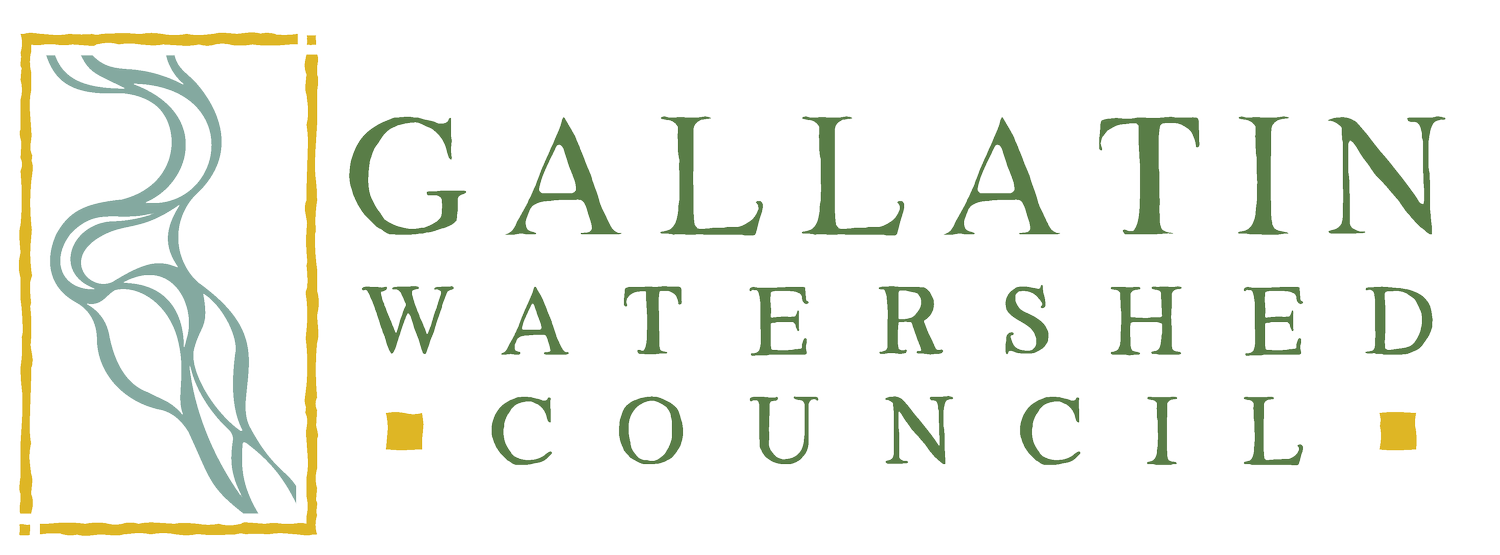Leave the Leaves
Calling all lawn and garden people! The Gallatin Watershed Council is asking our friends and neighbors to be part of a healthier urban forest and a happier watershed. This fall, we want you to try something new: keep the rake, blower, and gas can in the shed and let the leaves lie. Here’s why, some leaf management tips, and how to responsibly dispose of the extra.
Why Leaf It Alone?
Leaves are nature’s compost. Each spring and summer, with the aid of a vast network of friendly bacteria and fungi, tree roots pull up nutrients to grow a fresh crop of green leaves. Those leaves photosynthesize, capturing the sun’s energy and turning carbon dioxide and water into oxygen and glucose to build branches, bark, flowers, and fruit.
In the fall, trees push some of their carbohydrates and nutrients back into their roots to store for winter, but plenty stay in the leaves that fall to the ground. The tree is recycling: leaves nourish the tree and its community of grasses, flowers, bugs, mushrooms, and birds. But, when we bag leaves up and cart them off, or pile them in the streets to be swept away, we break the cycle and and lose all that value nature worked so hard to create.
When leaves are left on the ground it is good for:
Habitat: shelter and food for insects, pollinators, and birds.
Plant health: natural fertilizer for lawns, flowers, shrubs, and trees.
Water conservation: ground cover reduces evaporative losses, while soil organic matter increases water holding capacity and increases infiltration, helping soil soak up and retain water.
Tips for Leaving the Leaves
You can always just do nothing (go for a hike or read a book instead!), but an extra thick layer of leaves can start to turn your grassy yard into a forest floor. We think that’s pretty cool, and encourage you to be OK with a woodsy aesthetic, but for those that want to keep a tidy carpet of green grass, you can take a more hands on approach:
Light mulch: Keep a layer of leaves covering grassy areas, but not too thick, so you can still see some grass poking through. Chopping the leaves up with a mower can help them break down more quickly and allow for plenty of oxygen and sunlight to get through.
Around trees: Rake the leaves into a thick layer around the base of trees, roughly out to the dripline (2–10 feet). Trees prefer leaf litter or mulch instead of grass that competes for water and nutrients.
Garden beds: Spread a thick layer over your garden and flower beds to insulate perennials, suppress weeds, retain moisture, and feed the soil for next season.
Compost: Heap a big pile of leaves on your compost—they’re a great carbon (“brown”) source to balance nitrogen-rich (“green”) materials like food scraps or manure.
“Clean streets mean clean creeks”
If you plan to remove some of your leaves, be sure to do it responsibly. Bozeman’s fall leaf pickup and street cleaning program helps keep leaves out of storm drains that can cause flooding, infrastructure damage, and water pollution. Leaf litter in streams is good and natural, but when an entire city’s worth of leaves gets washed into our creeks, the excess carbon and nutrients upset the natural balance, degrading water quality and harming aquatic life.
The City of Bozeman Fall Leaf Pickup runs October 16 – November 12, 2025:
Subdivisions: Bag leaves in paper compostable bags only (no plastic) and place them on the boulevard by 7 a.m. on your scheduled pickup day.
Core Neighborhoods: Rake leaves into the gutter (no brush or branches) just before your pickup week and watch for No Parking signs so street crews can clean effectively.
Check the full Subdivision and Core Pickup Schedules on the City’s Fall Leaf Pickup webpage.
This fall, keep leaves where they can do the most good—in your yard, garden, or compost—and use the City’s pickup program to manage the rest responsibly. Small actions like these save water, protect our streams, strengthen our soils, and keep Bozeman’s urban forest thriving.

